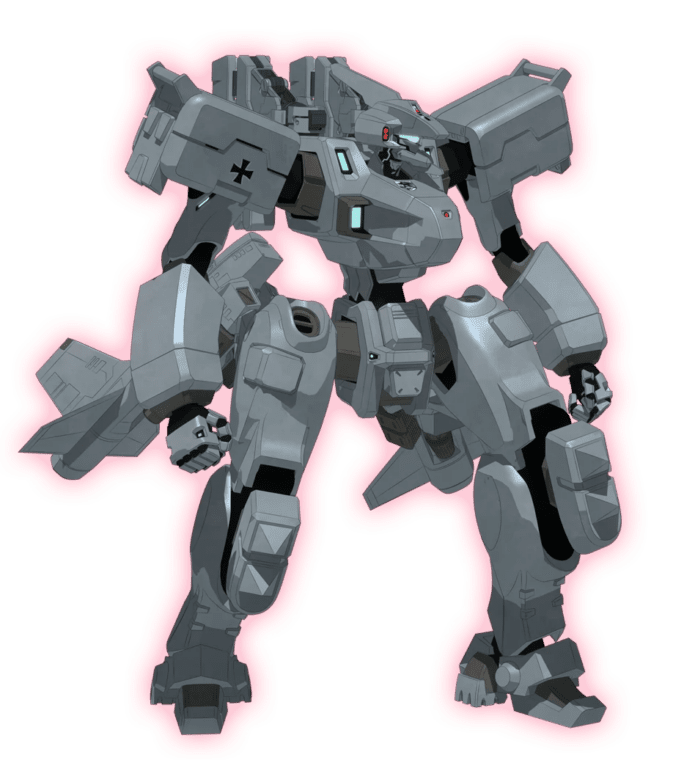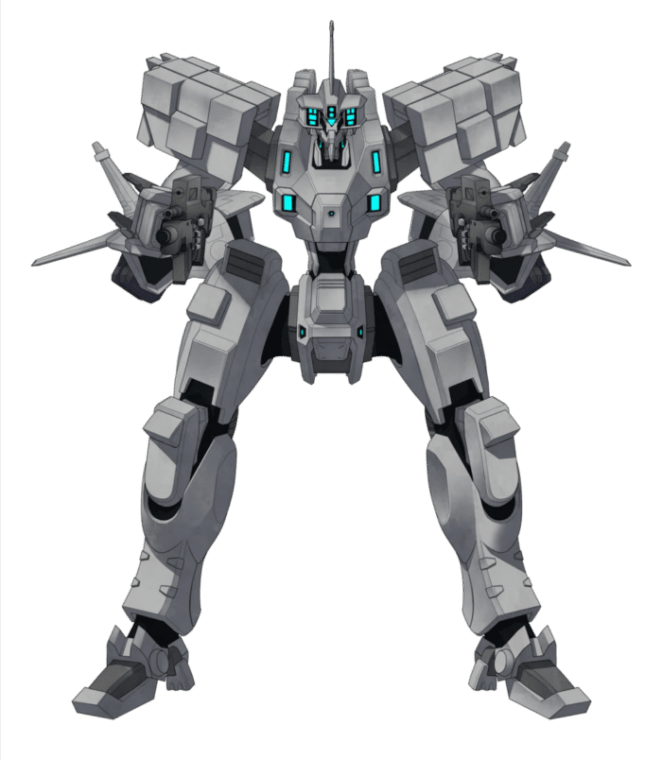
Mecha Profile: F-5 Freedom Fighter – Muv-Luv Alternative
When you’re overrun with hundred thousands of alien, you’d definitely need a fair number of giant robots to confront them to protect mankind. Unfortunately, the world in a Real Robot series like Muv-Luv isn’t kind to logistics. As shortage of TSF was becoming more and more severe, the U.S made a decision to produce a new lightweight, cost-effective unit to help with the BETA war. And that is the F-5 Freedom Fighter.
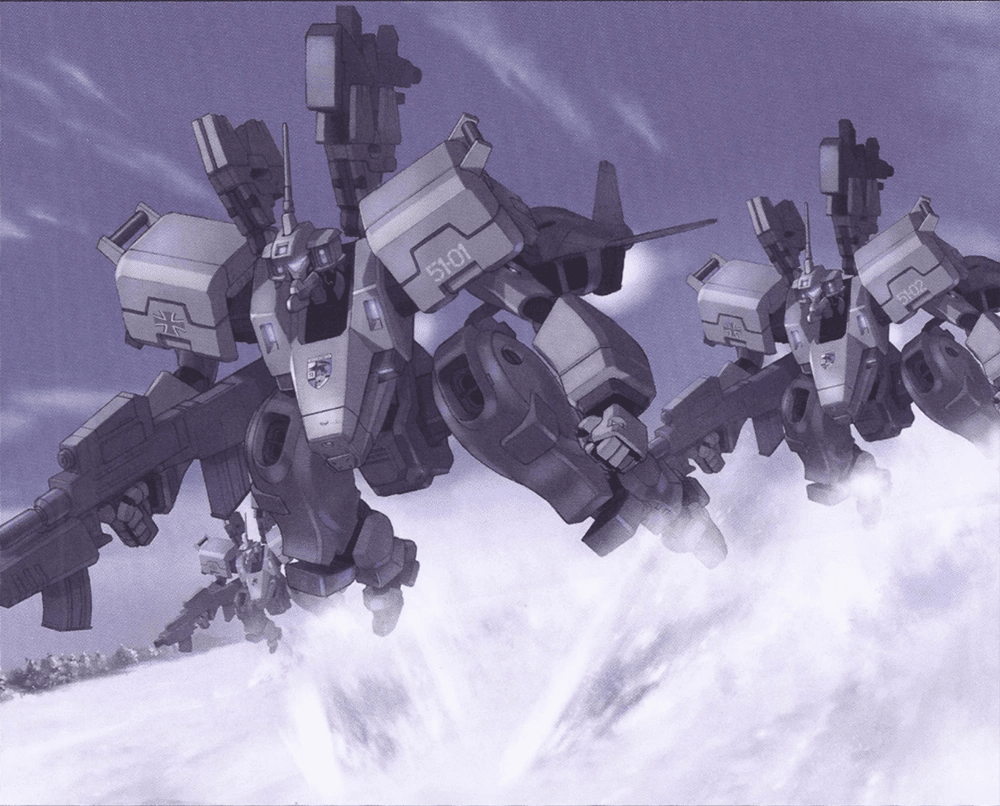
I. Development History:
– 2 years after its deployment, the F-4 Phantom has proven to be the key to stopping the BETA in their tracks. So many nations have put in their orders for F-4s to be supplied to their nation as well as pilot/maintenance knowledge. The TSF production lines could not keep up with the massive demand which led to them being overwhelmed and other countries not receiving their F-4s. That started the international F-4 deficit that was getting worse and worse everyday, not to mention F-4s were also getting damaged and destroyed during the war with the BETA.
– To counter this problem, the U.S refurbished the T-38 Talon – a training TSF unit – which was a lightweight unit that was also getting close to mass-production capabilities. The F-5 Freedom Fighter was born shortly after the initial proposal was accepted almost immediately. Manufactured by Northrock, 40% of all TSF production lines in North America, South America as well as Australia were switched over to the F-5. In addition, licensed mass-productions in countries across Europe also commenced.
– Gradually, the TSF shortage was solved and and the U.S prioritized their F-5 towards countries that did not have licensed manufacturing capabilities to create a defensive perimeter around the Europe battlefield to trap the BETA within. It was more well-received in Europe countries due to its lightweight and high-mobility design. Furthermore, the simplified equipment would be refurbished by various countries to suit their own specs – creating many local variants.
– Although created as a last resort for the TSF shortage, the F-5 wasn’t merely a cheaper version of the Phantom, it was a pioneer unit in and of itself by becoming the roots of almost all of Europe’s 2nd and 3rd-generation TSF, which are some of the most formidable in the battlefield.
– 2 years after its deployment, the F-4 Phantom has proven to be the key to stopping the BETA in their tracks. So many nations have put in their orders for F-4s to be supplied to their nation as well as pilot/maintenance knowledge. The TSF production lines could not keep up with the massive demand which led to them being overwhelmed and other countries not receiving their F-4s. That started the international F-4 deficit that was getting worse and worse everyday, not to mention F-4s were also getting damaged and destroyed during the war with the BETA.
– To counter this problem, the U.S refurbished the T-38 Talon – a training TSF unit – which was a lightweight unit that was also getting close to mass-production capabilities. The F-5 Freedom Fighter was born shortly after the initial proposal was accepted almost immediately. Manufactured by Northrock, 40% of all TSF production lines in North America, South America as well as Australia were switched over to the F-5. In addition, licensed mass-productions in countries across Europe also commenced.
– Gradually, the TSF shortage was solved and and the U.S prioritized their F-5 towards countries that did not have licensed manufacturing capabilities to create a defensive perimeter around the Europe battlefield to trap the BETA within. It was more well-received in Europe countries due to its lightweight and high-mobility design. Furthermore, the simplified equipment would be refurbished by various countries to suit their own specs – creating many local variants.
– Although created as a last resort for the TSF shortage, the F-5 wasn’t merely a cheaper version of the Phantom, it was a pioneer unit in and of itself by becoming the roots of almost all of Europe’s 2nd and 3rd-generation TSF, which are some of the most formidable in the battlefield.
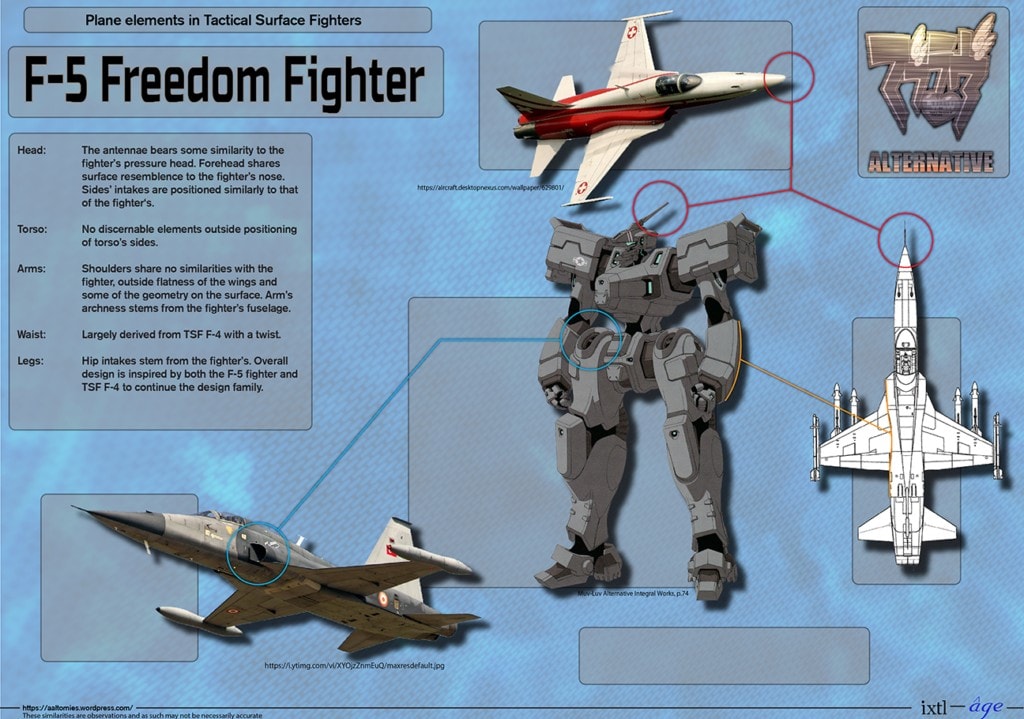
II. Technical Specs & Armaments:
– The F-5 Freedom Fighter stands at 17.3-meter tall, utilizing 2 FE85-GE-15 Jump Units manufactured by Northrock. The F-5 has a slimmer profile than the F-4 Phantom, being a lightweight craft that focus on reducing procurement cost as well as increasing maintainability. The reduction in armor also meant a higher chance of being damaged in battle. However, most TSF at the time was destroyed after the first hit anyway, so lighter armor for better mobility was preferred.
– Not just armor, the electronics equipment on board the F-5 was also simplified, which leads to more room for individual countries to modify the F-5 as they see fit, including strengthening its communication and enemy detection functions by using a new sensor mast, as well as adding knee spikes to increase close-quarter capabilities in dense BETA areas. Other mobility improvement include enhancing Jump Units, further reducing armor weight and increase STOL ability.
– For Assault Cannon, the F-5 uses either the GWS-9 or the FWS-G1 Assault Cannon. Deployed mostly by European countries, the Freedom Fighter is equipped with the successor to the F-4’s WS-16 Cannon. Inline with the light-weight directive of the F-5, the GWS-9 and FWS-G1 are both lighter than the WS-16 by approximately 20%. The GWS-9 and FWS-G1 resemble the G-36, Enfield SA80 and the FAMAS respectively.
– Starting from the F-5E Tornado ADV, the F-5 got arm-mounted blades for improved melee ability.
III. Variation:
Since its initial deployment, the F-5 has received many upgrades and refurbishments from the European countries, especially the UK, France, and Italy in particular.
– F-5E/F-5F Tiger II: An improved version by Northrock, featuring enhanced sensors, reduced cost and improved Jump Unit engines. The F-5F is a dual-seater for 2 pilots while the F-5E is a single.
– F-5G Tigershark: an improvement from the Tiger II with some Japanese technology, resulting in an “unexpectedly good aerial characteristics” for a 1.5-gen.
– F-5F Mirage III: An F-5 variant manufactured by the French Republic, featuring enhanced communication and close-combat capabilities. The F in the name stands for France and is unrelated to the Tiger II.
– F-5F Kfir: An Israel variant geared towards arid combat condition. Improved upon the Mirage III with increased engine output, anti-radiation treatment, improved dust resistance and enhanced infrared sensor capabilities.
– F-5E Tornado: United Kingdom-used variants of the F-5. They are mainly used for IDS (InterDictor-Strike) bombardment operations. Other changes including STOL (Short-TakeOff-and-Landing) capabilities, variable wing mechanism on the Jump Units to enable high-speed precision strike.
– F-5G Tornado: West Germany-used variants of the F-5. Mostly identical to the F-5E. Notably used by the 51st Tactical Armored Squadron Huckebein.
– F-5I: Italian variant of the F-5.
– F-5E Tornado ADV: a variant of the F-5E variant used by the UK. ADV stands for “Area Defence Variant”. The front infrared surveillance equipment systems and armament control were improved as well as the addition of arm-mounted blades for better melee combat, which granted the ADV the performance equivalent to a 1.5-gen TSF.
– F-5G Tigershark: an improvement from the Tiger II with some Japanese technology, resulting in an “unexpectedly good aerial characteristics” for a 1.5-gen.
– F-5F Mirage III: An F-5 variant manufactured by the French Republic, featuring enhanced communication and close-combat capabilities. The F in the name stands for France and is unrelated to the Tiger II.
– F-5F Kfir: An Israel variant geared towards arid combat condition. Improved upon the Mirage III with increased engine output, anti-radiation treatment, improved dust resistance and enhanced infrared sensor capabilities.
– F-5E Tornado: United Kingdom-used variants of the F-5. They are mainly used for IDS (InterDictor-Strike) bombardment operations. Other changes including STOL (Short-TakeOff-and-Landing) capabilities, variable wing mechanism on the Jump Units to enable high-speed precision strike.
– F-5G Tornado: West Germany-used variants of the F-5. Mostly identical to the F-5E. Notably used by the 51st Tactical Armored Squadron Huckebein.
– F-5I: Italian variant of the F-5.
– F-5E Tornado ADV: a variant of the F-5E variant used by the UK. ADV stands for “Area Defence Variant”. The front infrared surveillance equipment systems and armament control were improved as well as the addition of arm-mounted blades for better melee combat, which granted the ADV the performance equivalent to a 1.5-gen TSF.
IV. Trivia:
– The Mirage III and Tornado are original designs in real-life by Dassault and Panavia instead of F-5 variants like in Muv-Luv.
– The Tigershark was actually initially numbered as the F-5G during early development, but by 1983 has already been given the F-20 designation; something that has not happened in the Muv-Luv yet.
V. Gallery:
– The Mirage III and Tornado are original designs in real-life by Dassault and Panavia instead of F-5 variants like in Muv-Luv.
– The Tigershark was actually initially numbered as the F-5G during early development, but by 1983 has already been given the F-20 designation; something that has not happened in the Muv-Luv yet.
V. Gallery:
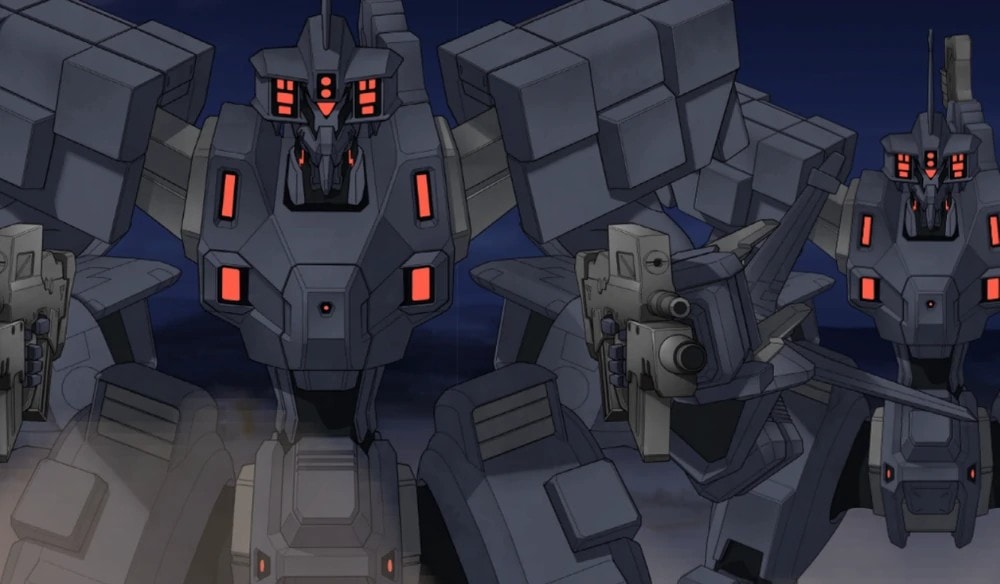

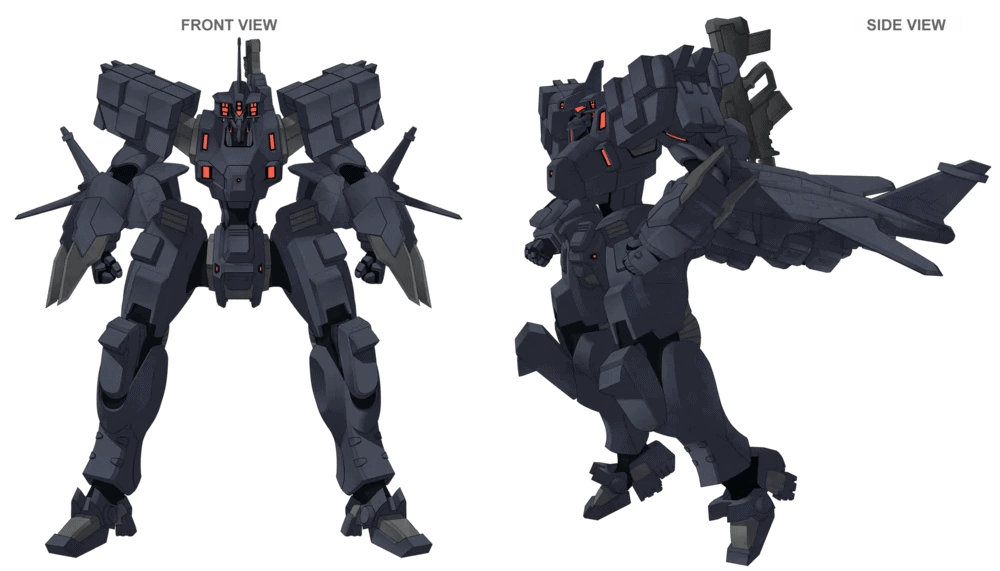
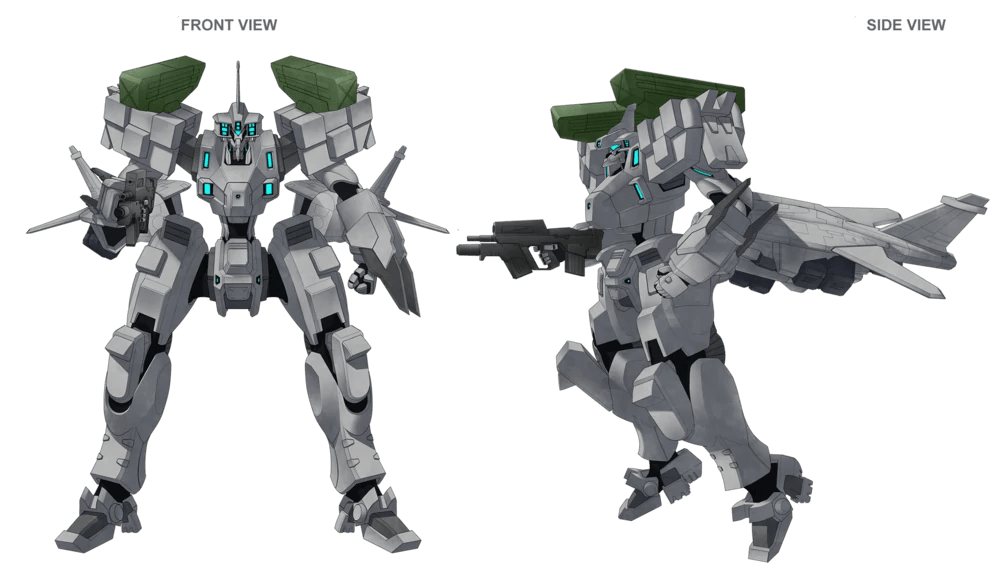

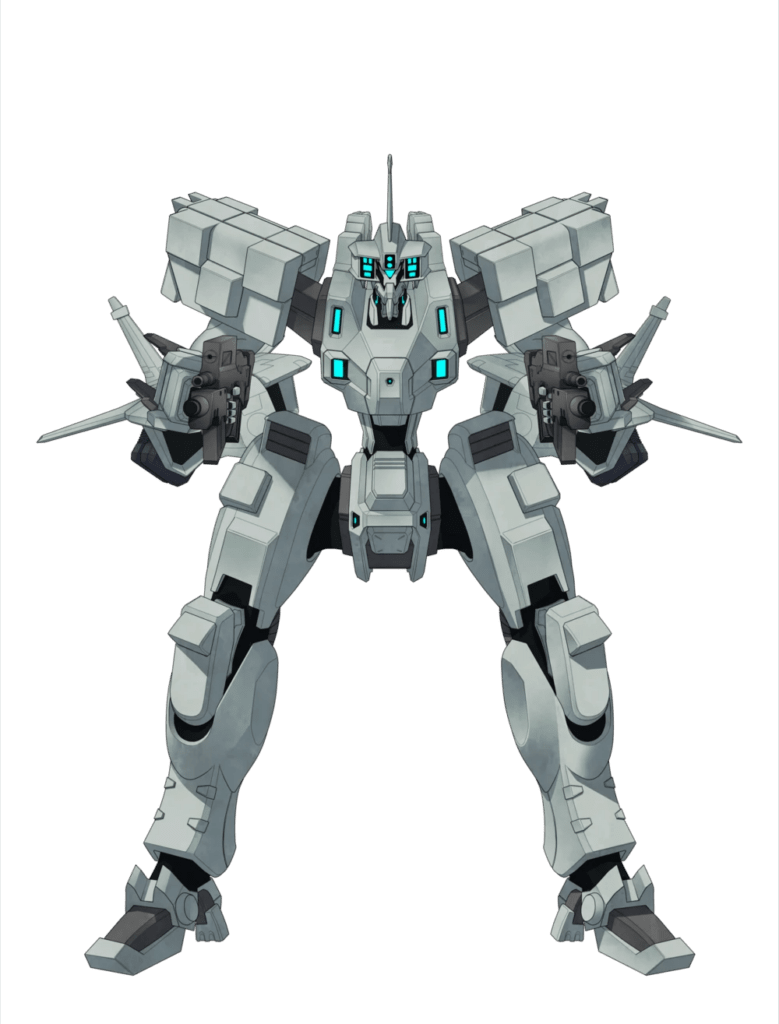

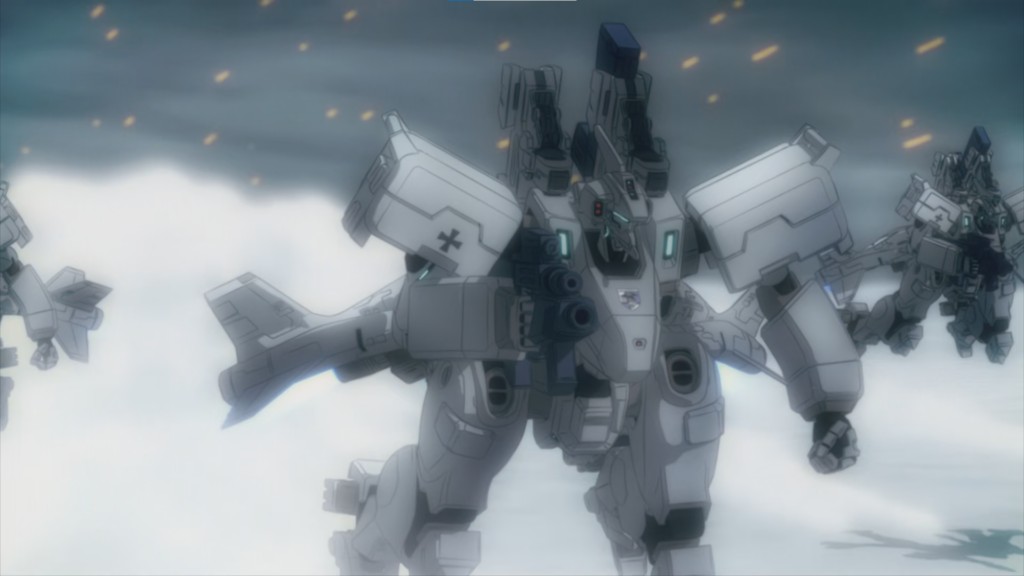
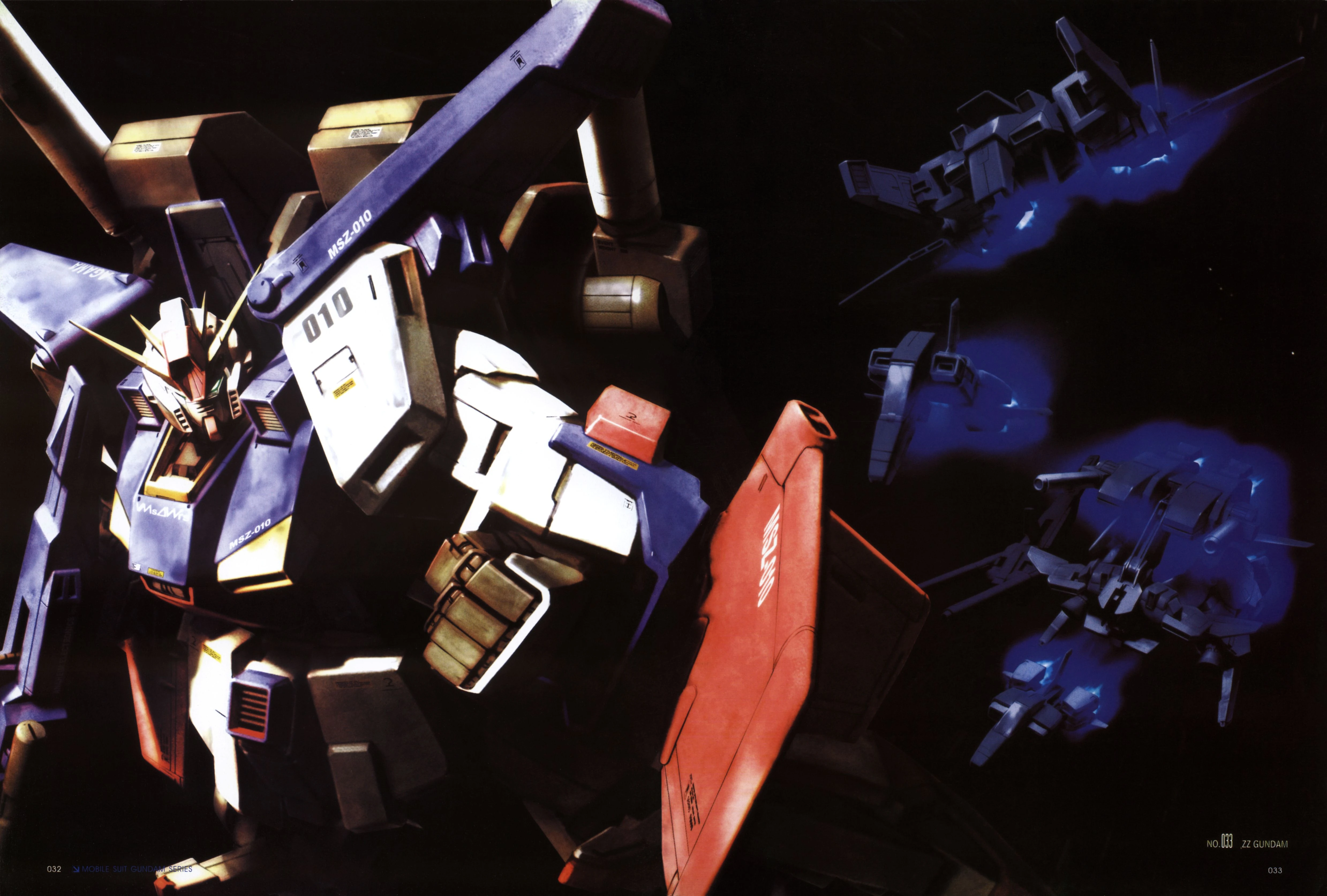
Mecha Profile: Gundam ZZ – ZZ Gundam
Power overwhelming! One of the main Gundam with the highest firepower pre CCA. The ZZ Gundam is an all-in-one combiner that was pivotal in the war against the Neo Zeon.

Mecha Profile: Gundam 0079 – MS-06 Zaku II
The backbone of the Principality of Zeon in the One Year War. The Zaku is not a super prototype, but its reliable performance has brought Zeon many victories – especially when Char Aznable pilot it.

Mecha Profile: MS Gundam Zeta – PMX-003 The O
One of the most chonky bois to ever appear on screen. Piloted by the nefarious Scirocco, The-O is an impressive MS that is more agile than it looks.



